How do you spend your time at KMD?
What are your dreams for the future?
Five students speak their mind.
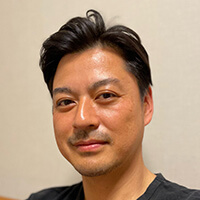
Hideyuki Watanabe
Japan
Second-year master’s student
Real Project: Creative Industry
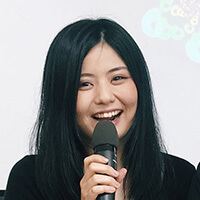
Nanako Shimokawa (Maki)
Japan
Second-year master’s student
Real Project: Policy Project
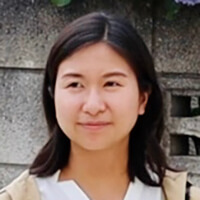
Sae Moriyama
Japan
Second-year master’s student
Real project: ITOMA

Misaki Kikuchi
Japan
First-year master’s student
Real Project: Global Education

Takahiro Fujimoto (Taka)
Japan
Second-year master’s student
Real Project: Network Media
Why did you enroll at KMD?
Hideyuki: While I currently work for an internationally-owned private corporation, when I started thinking about branching out, I became aware of KMD. I chose the School’s “Creative Industry” Real Project because its topics overlap with areas I want to work on in the future and the program seeks to address problems using new approaches.
Maki: After I became a university student, my mother and I started running a vegan restaurant. In the midst of trial and error motivated by the desire that a plant-based diet might someday be regarded as an accessible option within people’s daily food choices, I found myself wanting to incorporate other senses into the experience. That is when I heard about KMD. The school’s environment is supportive of students following their passions and I have loved furthering my research since I enrolled.
Sae: While working for seven years in a white-collar job, I continued to use my spare time in order to plan and organize events. As I did this, I became especially interested in spatial design and learned about KMD. I have been able to pursue a variety of research oriented by how “things” and “spaces” can facilitate people’s experiences as part of the Real Project “ITOMA.”
Misaki: I studied civil engineering as an undergraduate and planned to go to Graduate School for structural design. As I reconsidered what I wanted to do in the future, however, I realized that I wanted to make things that bring people together. That was what made me decide to focus again on design and to study at KMD.
Taka: For my graduation thesis I digitized the works of world-famous artists and experimented to see if people would still recognize the artists’ touch when they were broken down and scrambled into new forms. My supervising professor recommended either pursuing a master’s degree at an art school or studying at KMD. I chose the latter.
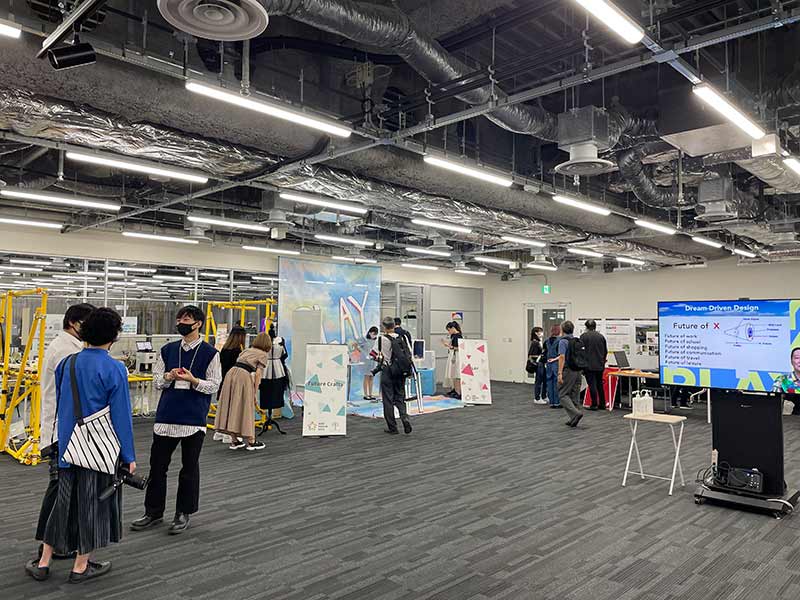
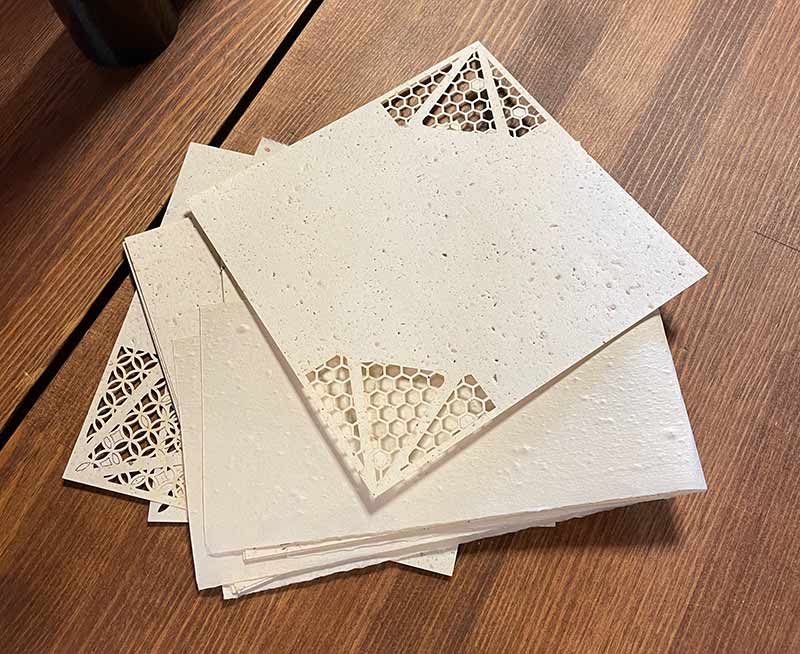
Please tell us about your current projects.
Hideyuki: The “Creative Industry” Real Project collaborates with various sites throughout Japan. I am currently participating in a project based in Sabae, a city in Fukui Prefecture. I am researching new approaches to local traditional crafts while also working in a “fab lab” (digital fabrication laboratory), that uses technology such as 3D printers and laser cutters in monozukuri, or Japanese-style manufacturing processes. For example, I work on things like interpreting new ways of using lacquer, and using traditional techniques to develop products that can be incorporated into modern life.
Futa: In the run up to academic conferences we sometimes find ourselves burning the midnight oil for development. I am rather busy at this moment in time, as the company I started will soon launch a new service. I am also involved in a musical group and am doing all these while linking them together. This is a way of life in which no two days are the same.
Maki: I am conducting research under the “Policy Project” based on the concept of, “increasing vegan eateries, vegan products, and opportunities to think consciously about food,” to contribute to its popularization. For example, while vegan meat has been given attention as a possible solution to environmental issues and food crises, in an effort to include non-vegans, we are creating products that people who enjoy meat will also find appetizing.
Misaki: I am also interested in shokuiku (dietary education) and, for my work in “Global Education,” I did fieldwork that involved taking my elementary school-aged cousin to a tea farm in Suzuka, a city in Mie Prefecture. As we picked and steamed the tea leaves and learned about the other processes used at the farm we got to learn how to prepare the tea by ourselves. My cousin, who used to avoid drinking tea, has now grown to love it. This experience has helped me pursue my research into product development and spatial design as they relate to nutrition and education.
Sae: For my “ITOMA” Real Project research, I have been working on issues related to soundscapes. The project is focused on creating a service where users can listen to audio guides while walking around a city and learn about attractions and places of interest. For my research, I accompany professional tour guides to observe and investigate how they work and make use of the information to use in the service’s prototype.
Taka: To tell you the truth, I am terrible about getting up in the morning. I decided to pursue research in sleep science in the hope that it might also help me wake up feeling somewhat more rested. I created an alarm system that suppresses melatonin secretion by using blue light, which is known for affecting human sleep cycles. Using this system, I am acquiring data such as heart rate, room brightness, and temperature to study the correlation between how one feels when waking up and the environment.
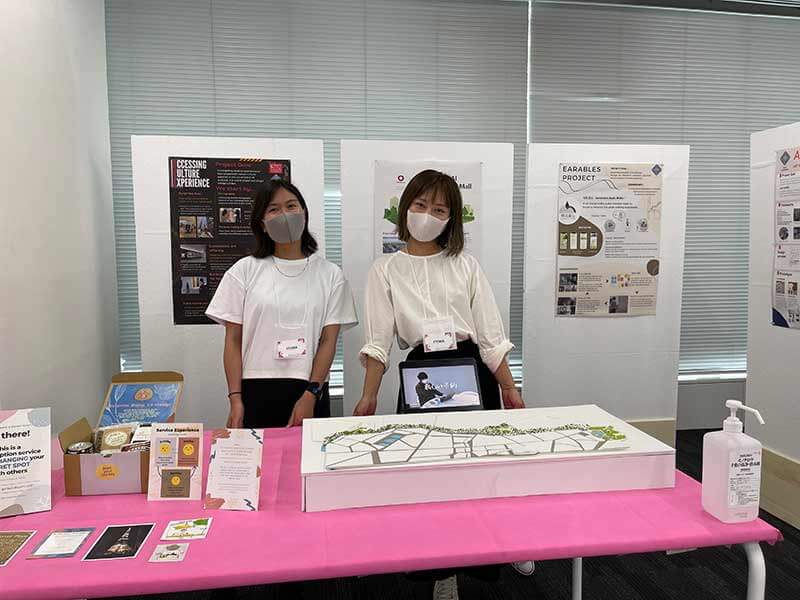
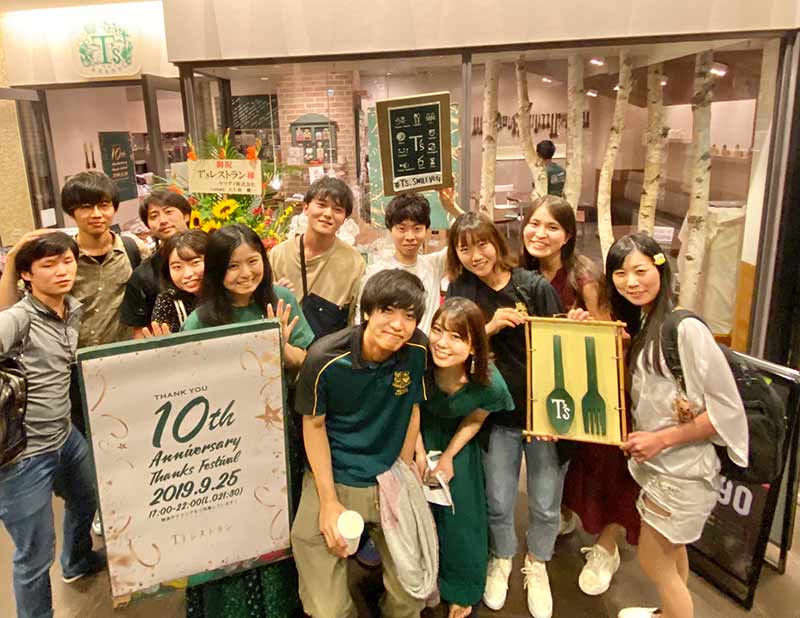
How has your life at school here been throughout the pandemic?
Taka: When thinking about a research theme I think it’s important to find people in one’s surroundings and get their impressions and perspectives. During the pandemic though, there are fewer places to talk casually and compare notes about our research, so that’s been difficult to work through. Now that we have gradually gotten used to things we have made more opportunities to talk while also devising ways of interacting with each-other in our academic community.
Maki: My plan was to: “write a thesis on X topic, conduct Y experiments, and collect survey responses within Z amount of time to coincide with product development.” However, with the extensions of the government’s declaration of a state of emergency, those plans kept getting delayed. It was definitely hard for me, since my product was not ready by the thesis submission deadline.
Sae: I joined KMD during the pandemic. While there were times when our hands were tied , now, as long as we submit an application, students can access the rooms and materials they require and use hybrid in-person/online systems to get work done. While there were times when our hands were tied, now, as long as we submit an application, students can access rooms and materials or use hybrid systems to get work done.
Maki: I work as a teaching assistant supporting guest professors during their lectures. One issue when classes were held in person, was the reluctance of students to ask questions. During the pandemic, though, after we introduced a live chat application, students began sending in plenty of questions for the online class. Oddly enough, communication has been revitalized in some ways.
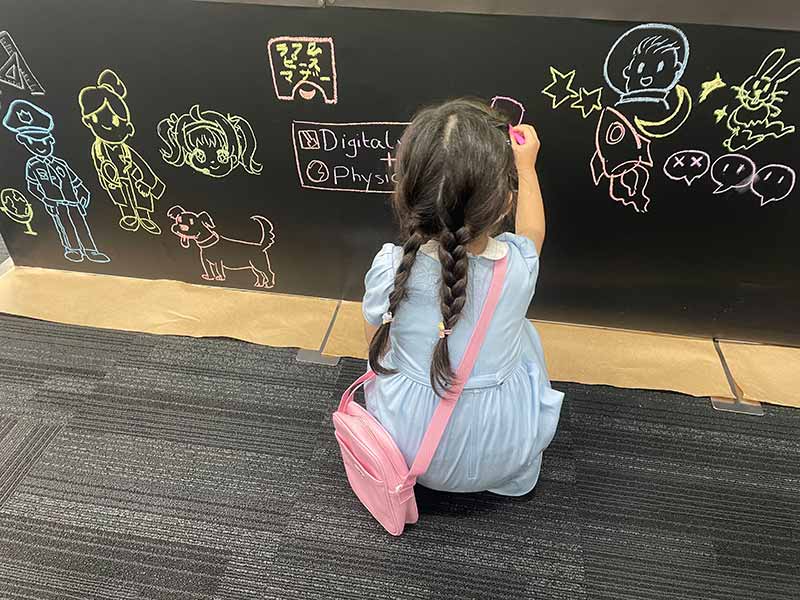
What would you say to those interested in KMD?
Hideyuki: KMD is full of people of diverse nationalities, ages, and backgrounds conducting research in a variety of fields. It’s a very supportive environment for research, so I highly recommend it to anyone considering enrolling.
Maki: It’s really easy to communicate at KMD and that there’s a culture where people support each other as they work towards their goals. I think that it’s the perfect place for people who have a clear idea of what they want to do or for those who are self-starters.
Sae: For me, I didn’t start out with a clear plan of what I wanted to do. But, after enrolling at KMD and seeing what other students were doing in their Real Projects, I was able to find a research topic that interested me. Meaning, as long as students are excited about trying something new, I think that they’ll be just fine.
Misaki: Even if you only have a vague idea of what you want to do, the people at KMD are always there to help out as you naturally figure out your path. As long as students have the drive and passion to “do something,” they are sure to discover lots of ways to enjoy themselves.
Taka: One of the most attractive features of KMD is its rich resources, including the expertise of instructors, faculty, and its wider network. Whenever you ask about anything, everyone is quick to share their insights or introduce you to someone with background knowledge. They also have the tools needed for easy and quick access to monozukuri and experiments. Whether you have already enrolled at KMD or not, I think it’s important to first find the resources around you so that you can decide what you want to do with them.
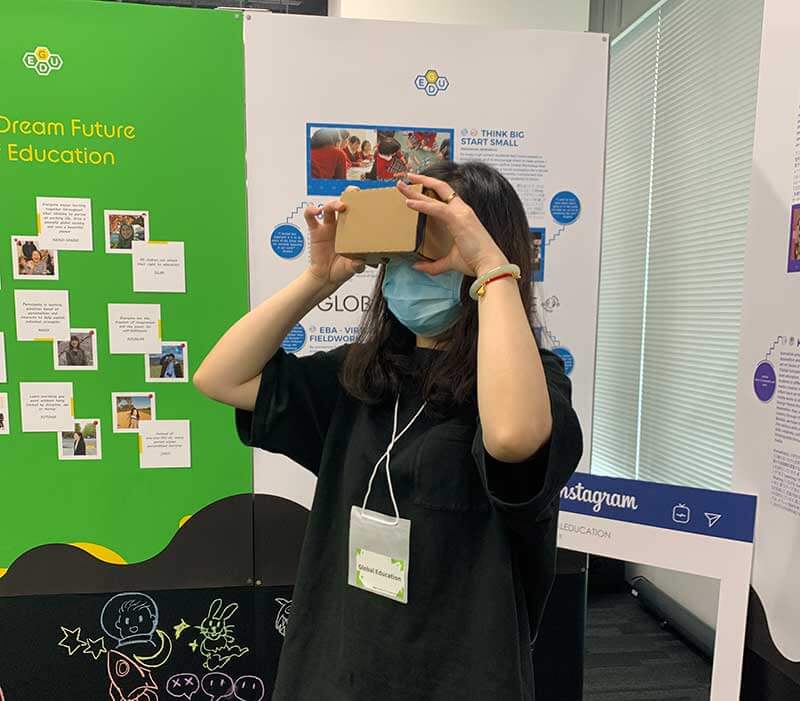
— Thank you very much.
(This interview was held in July 2021.)